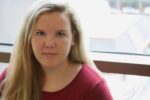Melior CEO and Co-Founder Ryan Markman contributed to this post.
Whether you’re trying to reach your audience, figure out the perfect gift suggestions for consumers, or keep your strategy agile, don’t you wish everything about the holidays could be a little easier? There may not be a sugarplum fairy to make everything simple for you, but artificial intelligence is already proving it belongs on marketers’ nice lists for the foreseeable future.
Even consumers are ready to catch a (sleigh) ride on the AI bandwagon, with Coveo finding that 31% of consumers think suggestions powered by generative AI are useful for online gift shopping. As the peak holiday marketing season continues, AI is already making its mark for many brands, from audience connections to personalization.
While it’s too late to throw out the holiday handbook and start over, you might be able to take away some AI opportunities to help your brand win through the end of the year and beyond.
Harnessing AI for audience understanding
AI is a hot-button issue for many consumers, but marketers haven’t hesitated to implement the new tech in their strategies: the Marketing Artificial Intelligence Institute found that 66% of marketers say AI is either very important or critically important to their marketing success.
AI efficiencies can be especially useful in Q4 when competition is stiff. Trying to reach the right customers can be a nightmare at the best of times, but during the holidays reaching your ideal consumer is like finding a needle in a haystack. Customers are so overloaded with holiday messaging that it takes a lot to break through the noise.
AI can help with that: robot-powered ad offerings like Meta’s new advertising options can do a lot of the holiday heavy lifting by meeting your customers where they’re at. Meta’s new tools include promo code ads that spotlight offers and reminder ads to notify buyers about upcoming sales, helping reach shoppers with the right deals at the right moment to encourage them to convert.

Beyond ad formats, AI can also help reach audiences through the customer experience. New AI chatbots, like Amazon’s Rufus or Meta’s AI assistant, can answer customer questions for customers, no human reps required. We’ve already seen this at work with fintech company Klarna, which introduced an AI assistant earlier this year that handled two-thirds of Klarna’s customer service chats (or the equivalent work of 700 full-time agents). Not only did Klarna’s assistant maintain satisfaction scores, but it also resolved customer requests and issues faster and more accurately.
An AI chatbot system can be a great way for brands to help customers get answers to their questions more quickly, especially as more and more requests roll in during the holidays. ‘Tis the season for feelings to be running high, and your support team may not be able to handle the increased volume of questions without help.
AI enables customer support reps to do higher-quality work at a higher volume. But as a marketer, remember that implementation can make all the difference between a frustrating experience and a seamless one–don’t dive into an AI tool without carefully testing it first, or you risk alienating customers rather than supporting them.
Brands are also leveraging AI tools to keep an eye on customer sentiment. Analyzing reviews, support requests, or ad comments is easier than ever thanks to tools like ChatGPT-4. By taking this online chatter into account, you can understand your target customers’ motivations, values, and pain points in real time so you can adjust your strategy as needed.
Marketers can then take this data to create audience personas and update them as your customer base evolves and factors like seasonal changes develop. With the right prompts, you can even leverage ChatGPT-4 to build the personas using this information. Once you have the personas, you can update your strategy based on creative that would resonate with them.

Unlocking personalization potential with AI
Consumers don’t want to feel like they’re just one of many when it comes to marketing campaigns. Generic and inauthentic creative and copy aren’t likely to convert your audience–instead, you need messaging that makes them feel understood.
Since personalization is key to marketing success, it’s no wonder that, according to a study from the Marketing Artificial Intelligence Institute, 54% of marketers are using AI to create personalized consumer experiences at scale.
One major way they’re accomplishing this is through dynamic creative optimization (DCO). In a survey by Digiday and Clinch, 99% of respondents said that DCO was a significant factor in their work. DCO allows for real-time adaptability, personalization at scale, improved relevance in ad serving, enhanced engagement, A/B testing, and multiple iterations of creative and copy.

Brands can also leverage AI tools like Luma Labs’s Dream Machine to make creative assets more efficiently, creating storyboards and bringing the client’s creative direction to life when they previously lived only as static assets. This saves crucial time: because teams don’t need to storyboard the assets by hand, they can focus all their energy on developing great ideas and tackling any last-minute holiday campaign snafus.
Keeping your holiday strategy agile at all times
A holiday strategy isn’t something you can just throw together at the last minute. More than likely, you’ve had your campaign plans in place since mid-June or July. But that doesn’t mean you can set it and forget it when the clock strikes twelve on October 1st–even the greatest strategy won’t work if you’re not adapting to demand as the season goes on.
This is one of the places where AI shines for marketing teams. Maybe you’ve been running out of steam with some of your assets and you need new copy or creative faster. ChatGPT can be a great partner here. You can give it information about your brand, brand guidelines, and examples of concepts or creative that have worked in the past, and it will rapidly generate solid ideas for new copy or creative iterations.
Marketers should think of AI as an extension of their content teams–it’s a tool to help employees brainstorm new ideas, but it’s not a replacement for a human touch. Teams should carefully review any content or ideas produced by AI to make sure they hold up to a human standard before releasing anything, so you can avoid mistakes that might alienate your audience.
You can also work towards better targeting and personalization throughout the season with the help of large language models (LLMs), which are a great way to take unstructured information and turn it into structured variables that are easily analyzeable.
By harnessing the power of an LLM, you can get better insights faster and apply them to whatever area of your marketing you choose. For example, you can have the LLM categorize and tag the content that’s in videos for your creative campaigns.
Performance media teams have done this manually with naming conventions for a long time. But with AI, you can generate those tags at a much greater scale and more quickly, instead of attempting to do it retroactively (which is a huge pain point). Faster insights mean you can make faster adjustments during the holiday season, which can pack a punch at the most crucial time of the year for marketers.
Automating different marketing functions with AI can give marketers time to focus on what’s working and what’s not, so they make the necessary adjustments before sinking crucial ad dollars into an inefficient campaign.
AI has rightfully earned its place on the 2024 nice list, but it can never replace marketers who are hard at work to make the holiday both merry and bright for your brand. Think of AI as a holiday helper: it’s there to lend a hand, not steer the sleigh alone.





